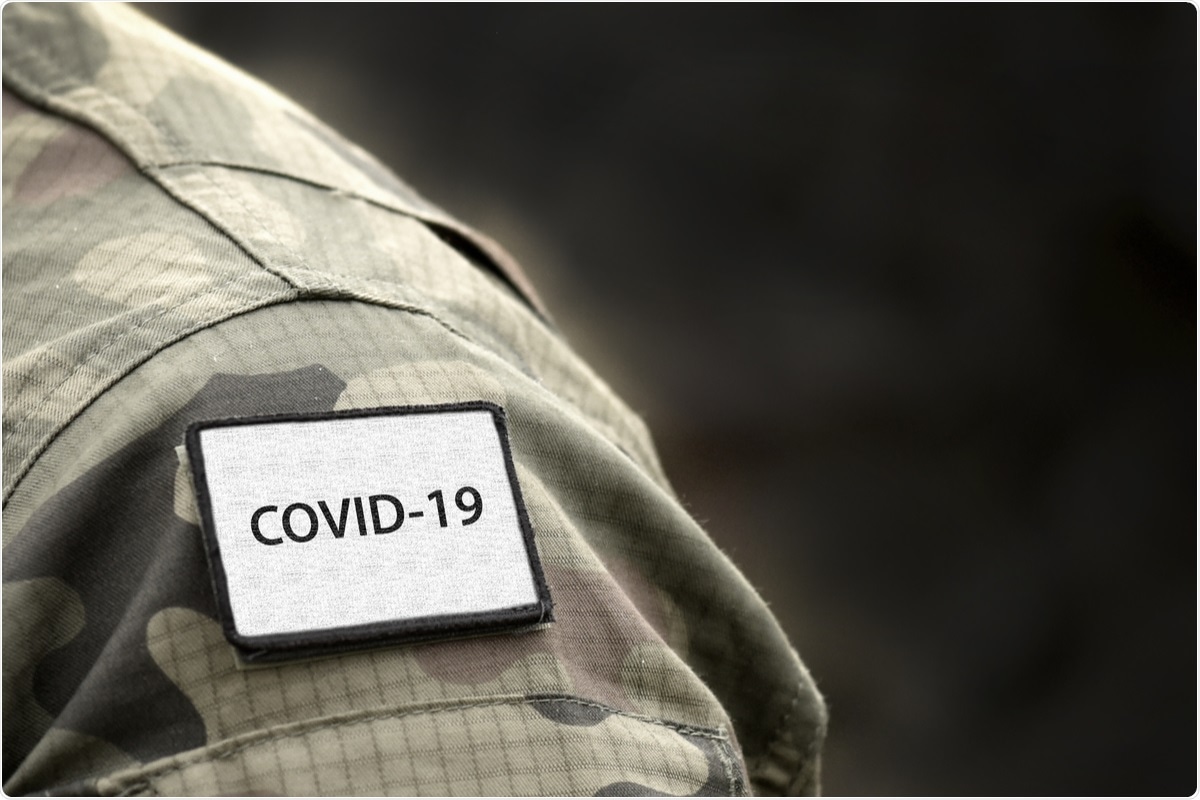Given that globalization has increased the risk of outbreaks escalating into pandemics, understanding transmission mechanisms of infectious diseases have become very important to formulate global public health policy.
 Study: The military as a neglected pathogen transmitter and its implications for COVID-19: A systematic review. Image Credit: Bumble Dee/ Shutterstock
Study: The military as a neglected pathogen transmitter and its implications for COVID-19: A systematic review. Image Credit: Bumble Dee/ Shutterstock

 This news article was a review of a preliminary scientific report that had not undergone peer-review at the time of publication. Since its initial publication, the scientific report has now been peer reviewed and accepted for publication in a Scientific Journal. Links to the preliminary and peer-reviewed reports are available in the Sources section at the bottom of this article. View Sources
This news article was a review of a preliminary scientific report that had not undergone peer-review at the time of publication. Since its initial publication, the scientific report has now been peer reviewed and accepted for publication in a Scientific Journal. Links to the preliminary and peer-reviewed reports are available in the Sources section at the bottom of this article. View Sources
A recent systematic review by researchers in Canada aimed to study existing evidence for the military being a historically relevant disease vector that has been overlooked during the coronavirus disease 2019 (COVID-19) pandemic.
This study is available on the medRxiv* preprint server.
The study
The researchers searched three electronic databases without any temporal restrictions. They identified 2010 studies out of 6477 spanning more than two centuries (1810 – 2020) that met the inclusion criteria for the review and offered evidence for the military being a pathogen transmitter, within itself or between the military and civilians.
Two of the researchers independently extracted data from the studies with the help of a standardized form. They grouped studies based on the type of transmission mechanism and extracted direct quotes to generate themes and sub-themes. Then, they performed a content analysis and generated frequency distributions for each theme.
The results showed that the biological mechanisms driving the transmission are contaminated food and water, person-to-person transmission, vector-borne, and airborne routes. Social mechanisms that facilitate transmission included unhygienic conditions, crowded living spaces, strenuous working and training conditions, pressure from military leadership, absent or inadequate vaccination programs, poor compliance with public health advice, high-risk behaviors, contractor mismanagement, and occupation-specific freedom of movement.
The researchers found that contaminated food and/or water was the most common route of biological transmission. Living conditions were the most common mechanism of social transmission, with young and low-ranking military personnel being repeatedly reported as the most affected group. Some social mechanisms, including employment-related freedom of movement, were unique to the military as a social institution. While some studies explicitly focused on civilian populations, many others had information that indicated that military outbreaks likely impacted civilians.
Conclusion
In conclusion, the military features highlighted in this study are a significant public health threat, especially for countries with a considerable military presence or underdeveloped public health systems. Unlike biological transmission mechanisms, many social transmission mechanisms were unique to the military, thus facilitating super-spreader events and impacting civilian health.
This systematic review shows that multiple mechanisms facilitate disease transmission within military bases, missions, medical institutions, and civilian populations. The most common biological mechanism identified was contaminated food and water, and others included close contact, sexually transmitted and bloodborne infections, vector-borne, droplet, and airborne routes.
Living conditions such as crowded living and sleeping practices were identified as the most common social transmission mechanisms. Other social mechanisms driving transmission include unhygienic living and/or food preparation, stressful working/training conditions, and inadequate vaccination programs, poor compliance with public health advice, and contractor mismanagement.
We live in an increasingly interconnected world facing the challenges posed by an unprecedented pandemic caused by a novel coronavirus and more such viruses of pandemic potential in the future. The military features identified here may aggravate current and future public health challenges and weaken attempts by nations to implement efficient and equitable pandemic control policies.

 This news article was a review of a preliminary scientific report that had not undergone peer-review at the time of publication. Since its initial publication, the scientific report has now been peer reviewed and accepted for publication in a Scientific Journal. Links to the preliminary and peer-reviewed reports are available in the Sources section at the bottom of this article. View Sources
This news article was a review of a preliminary scientific report that had not undergone peer-review at the time of publication. Since its initial publication, the scientific report has now been peer reviewed and accepted for publication in a Scientific Journal. Links to the preliminary and peer-reviewed reports are available in the Sources section at the bottom of this article. View Sources
Article Revisions
- Apr 29 2023 - The preprint preliminary research paper that this article was based upon was accepted for publication in a peer-reviewed Scientific Journal. This article was edited accordingly to include a link to the final peer-reviewed paper, now shown in the sources section.